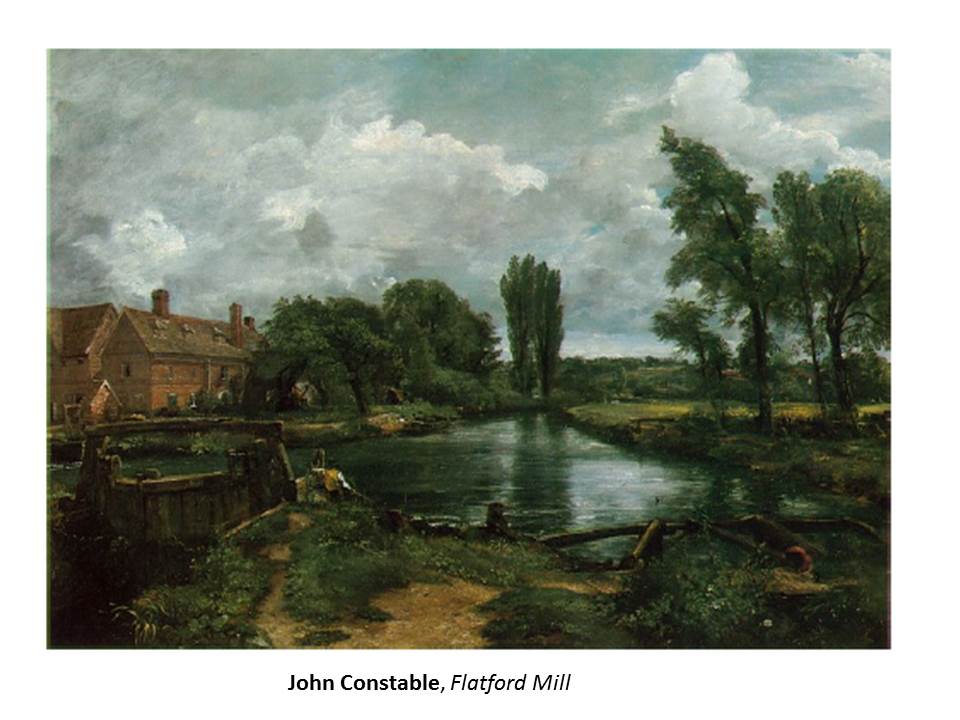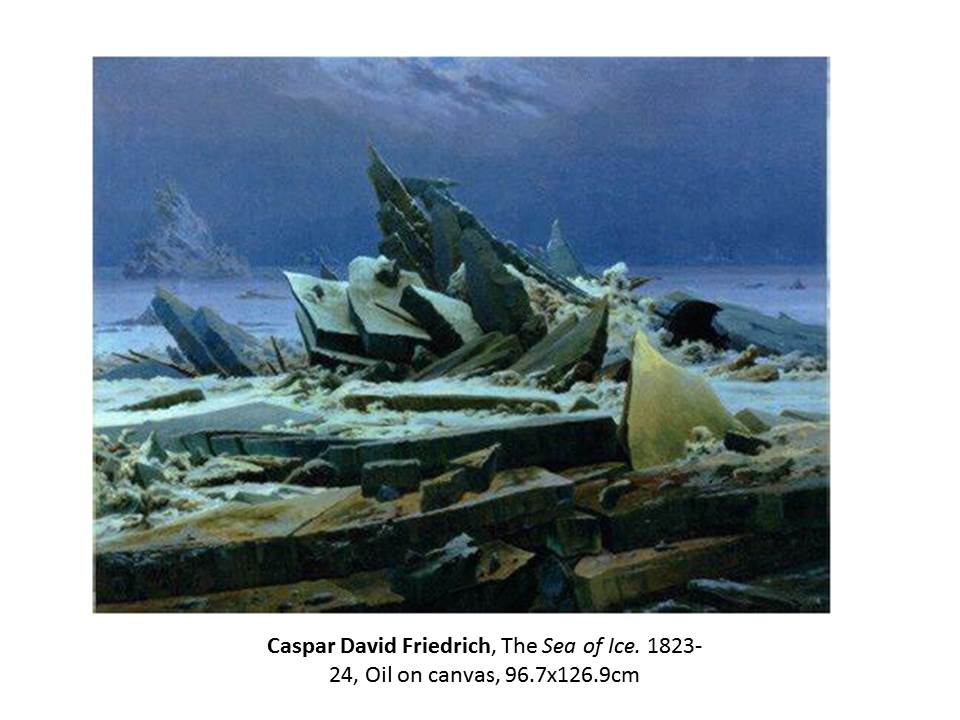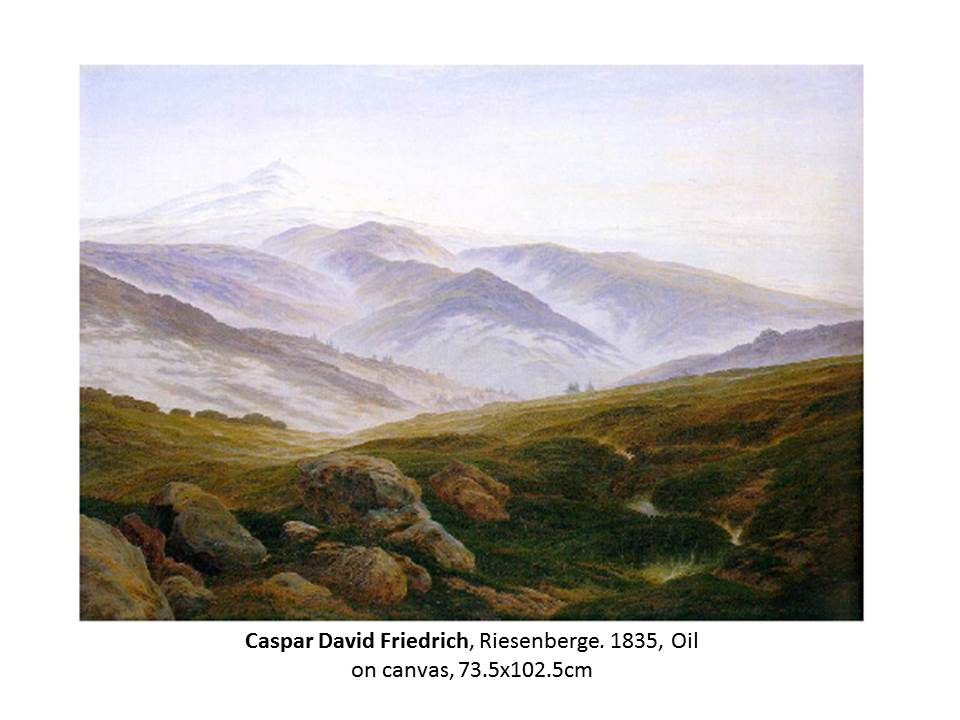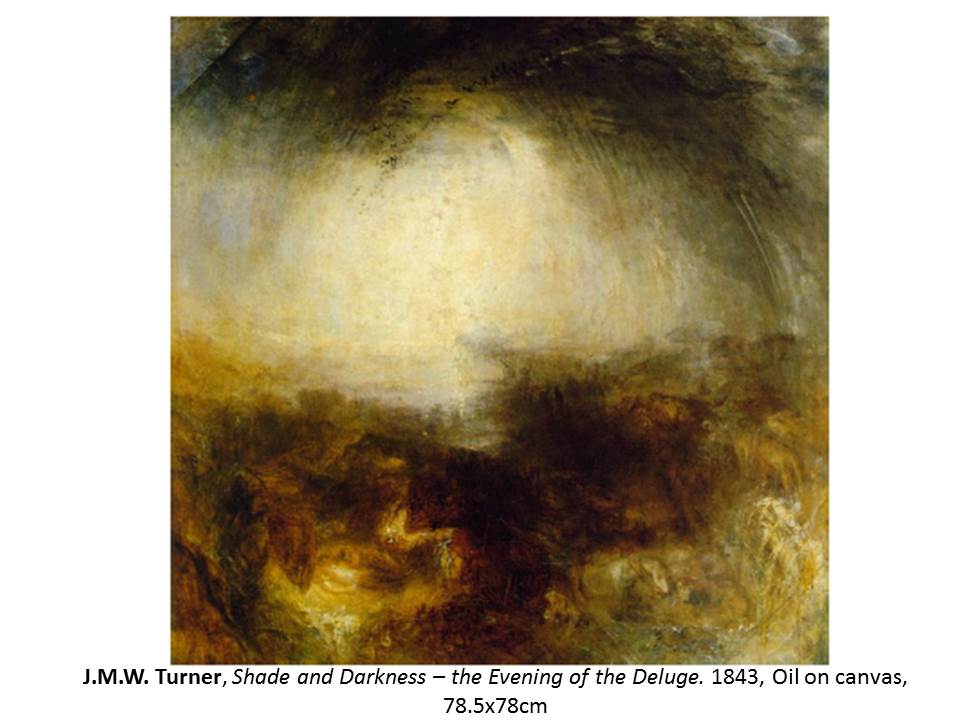‘a movement in the arts and literature which originated in the late 18th century, emphasizing inspiration, subjectivity, and the primacy of the individual.’
In the late 1700s in Europe and a few years later in America, numerous advances in the sciences led to new ideas about how the Earth was formed and about the position of humanity in relation to the universe and our own world. Forward looking people began to realize the Earth is an ancient place. A new fascination arose regarding the natural world. Also, as people migrated to the larger cities, people wanted to be reminded of the beautiful countryside, far from muddy city streets full of horse droppings, running sewage, and air full of coal soot and smog. Most of today’s modern cities are clean and livable in comparison. Innovation created new wealth, and these people wished to adorn their walls with objects of beauty including landscape paintings. This new outlook created the perfect conditions for landscape art to assume the highest position in the minds of the wealthy art collectors. Religious themes assumed a less important role as a result.
A new generation of landscape painters arose not only to meet the demand, but also to create landscape art for its own sake. During the first half of the 1800s, landscape art became more realistic, even reaching levels of hyperrealism as artists strove to bring back dramatic vistas from every corner of the world. In the second half of the century, photography began to have an impact on landscape painting and changed it forever.
The first movement of this century in landscape painting was Romanticism. The irony is Romanticism was a reaction against the stark realism of modern science during a period of scientific advancement! It emphasized emotions such as awe and rapture. So the move into nature that occurred because of scientific discoveries led to a deeper probing into human emotion regarding our natural surroundings.





Landscape Photography shows spaces within the world that are huge and continuous, but at other times can be microscopic. The presence of nature can be captured by photographs along with the man-made features that have disturbed the landscapes.
From the beginning of landscape photography and into the present time, some of the most noted photographers have been inspired and challenged by the overall beauty of nature and their desire and appreciation to see it preserved. Many landscape images show little to none human movement and are taken in the search of a pure, clean representation of nature in all its fullness without human influence, instead featuring strongly defined landforms, weather, and ambient light.
Romanticism has long been associated within the landscape. In the medium of photography, the sense of romance of the landscape features it spirit in full bloom. It is very hard to categorise. The very nature of Romanticism is rather uncontrollable and unpredictable. At other times its quiet and sensual power manifests into beautiful and stunning images. Sometimes it features animals or humans, while at other times the landscape will be empty and bare of any form of life. The most notable feature in a landscape image of romantic quality is that it will stir the emotion and feelings and cause inspiration of the imagination.




Romanticism in todays photography
Around the world, countries name their seasons differently, and some also differ with the starting date of the seasons. The purpose of the Romantic Landscape is to widen our understanding of what contemporary landscapes look like across the world today. Photographers nowadays tend to capture romantic landscapes the feature either water with reflections or sunsets that contain lots of orange tones as they are calming colours that are associated with romaticism.
